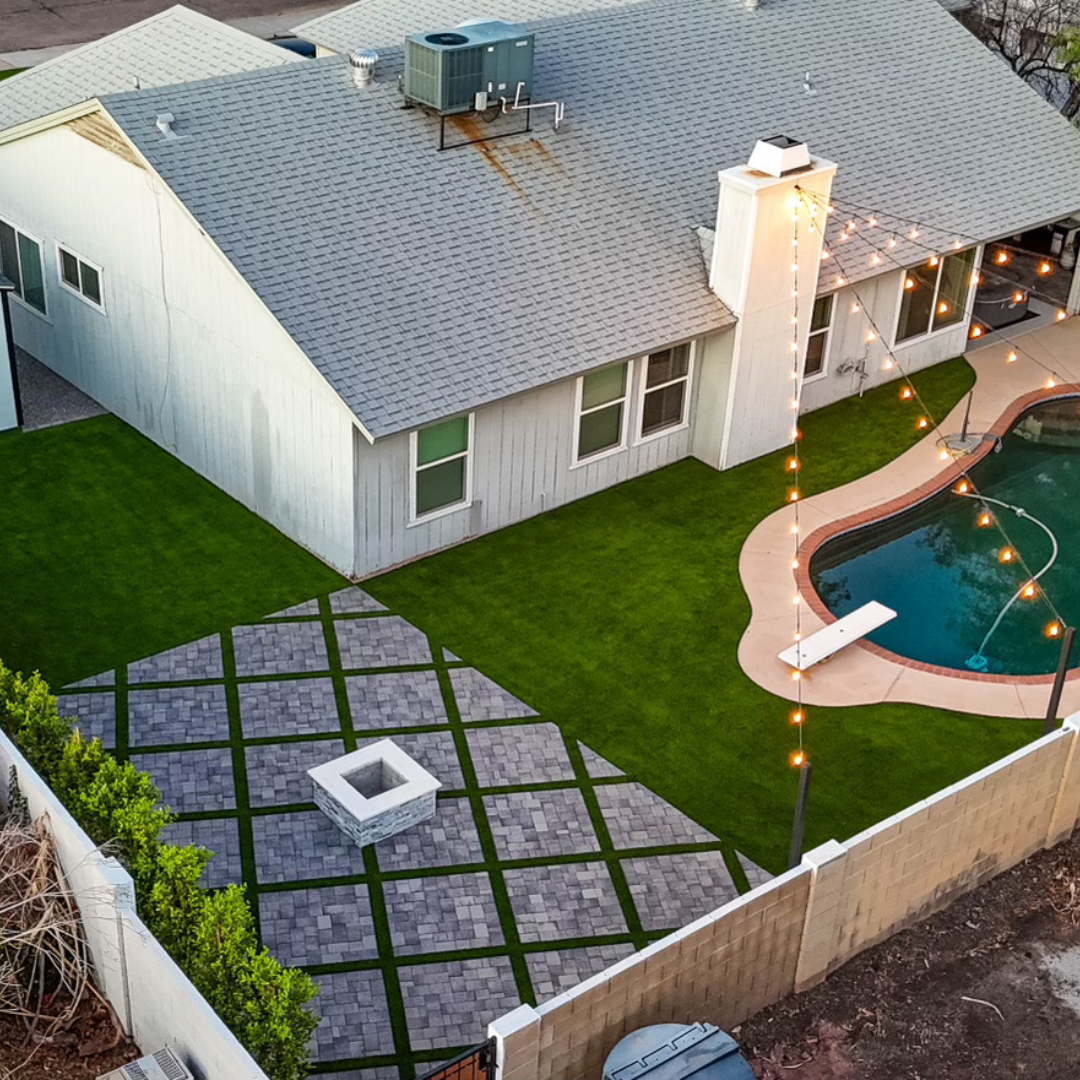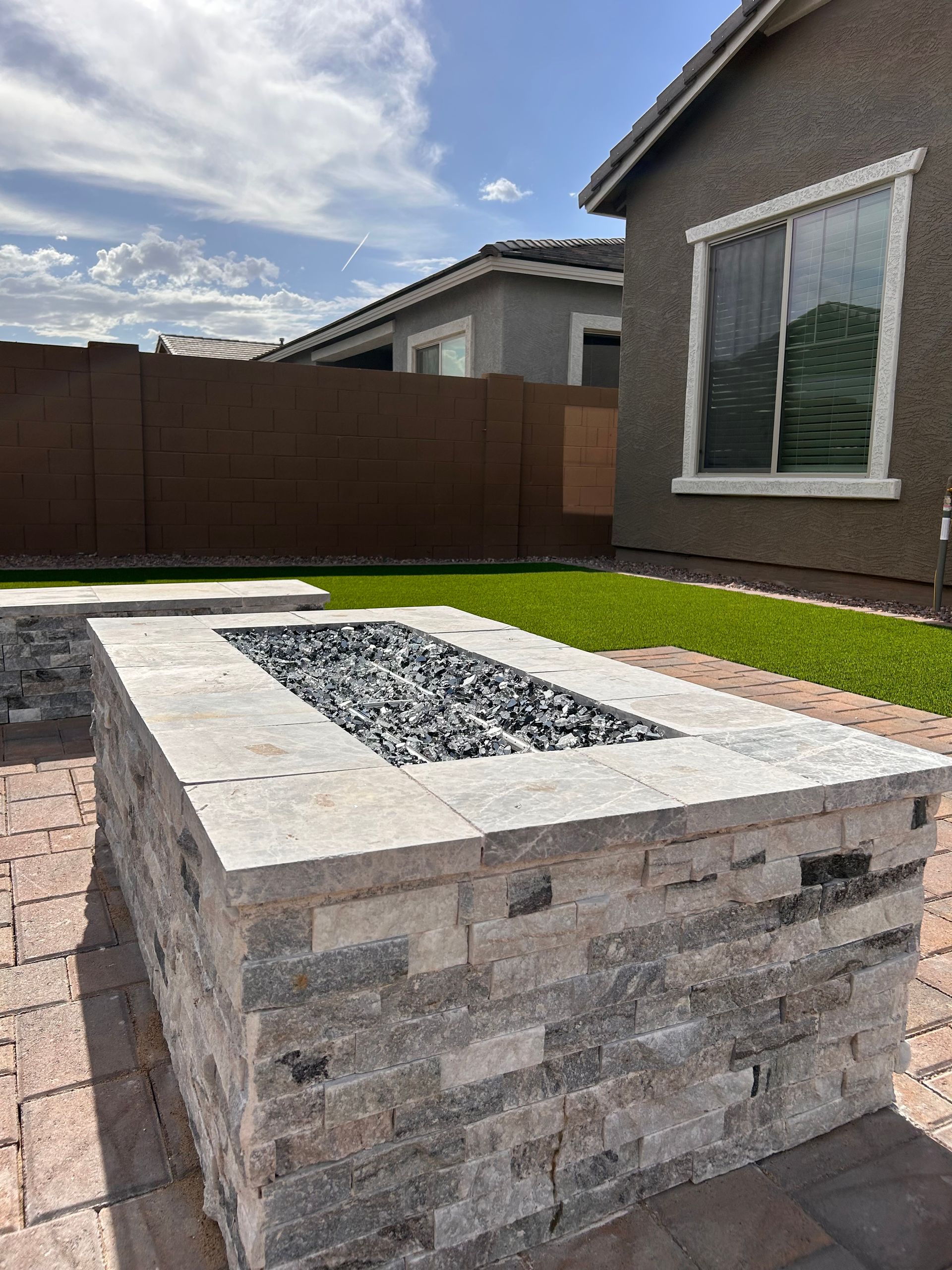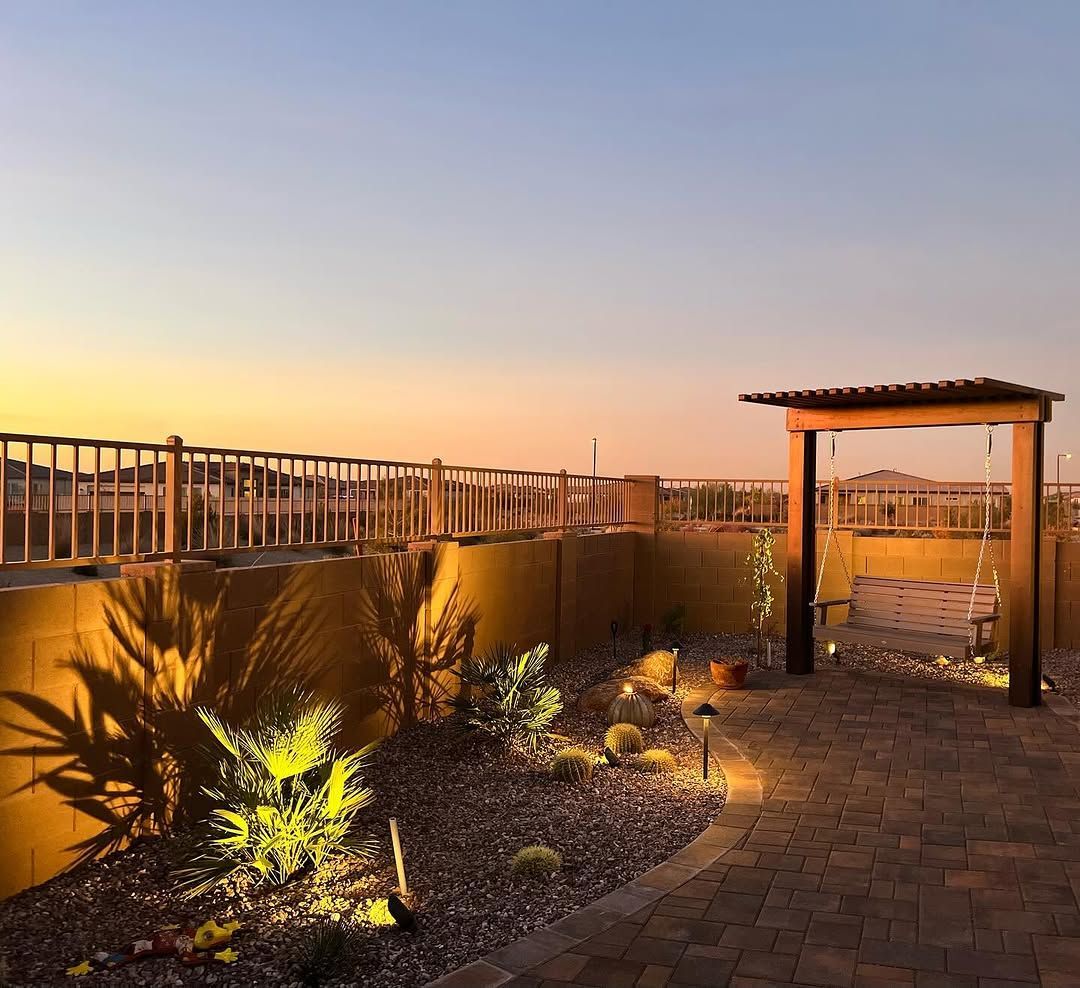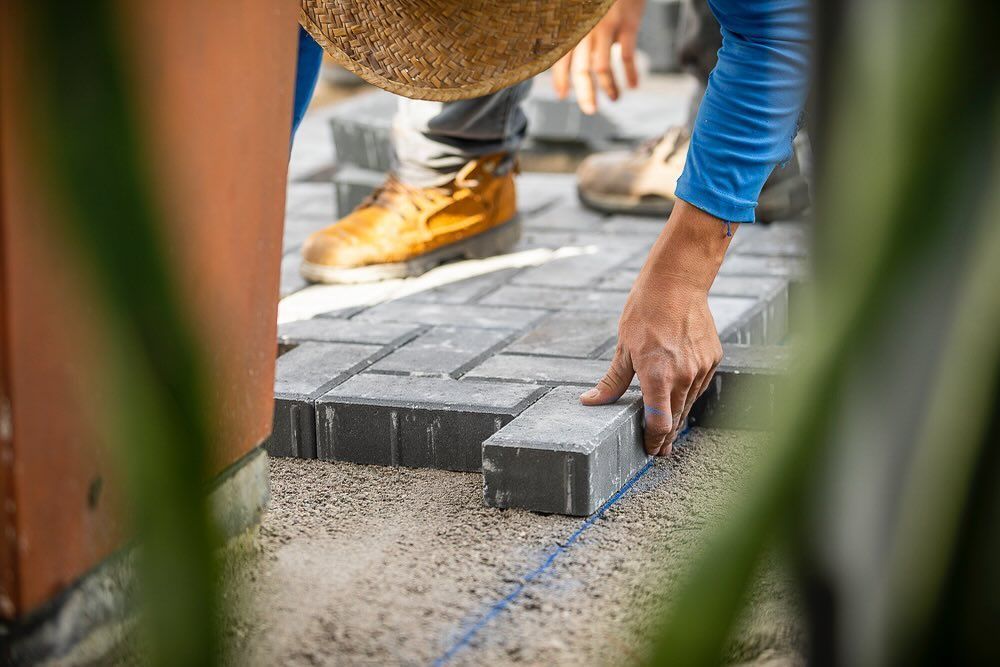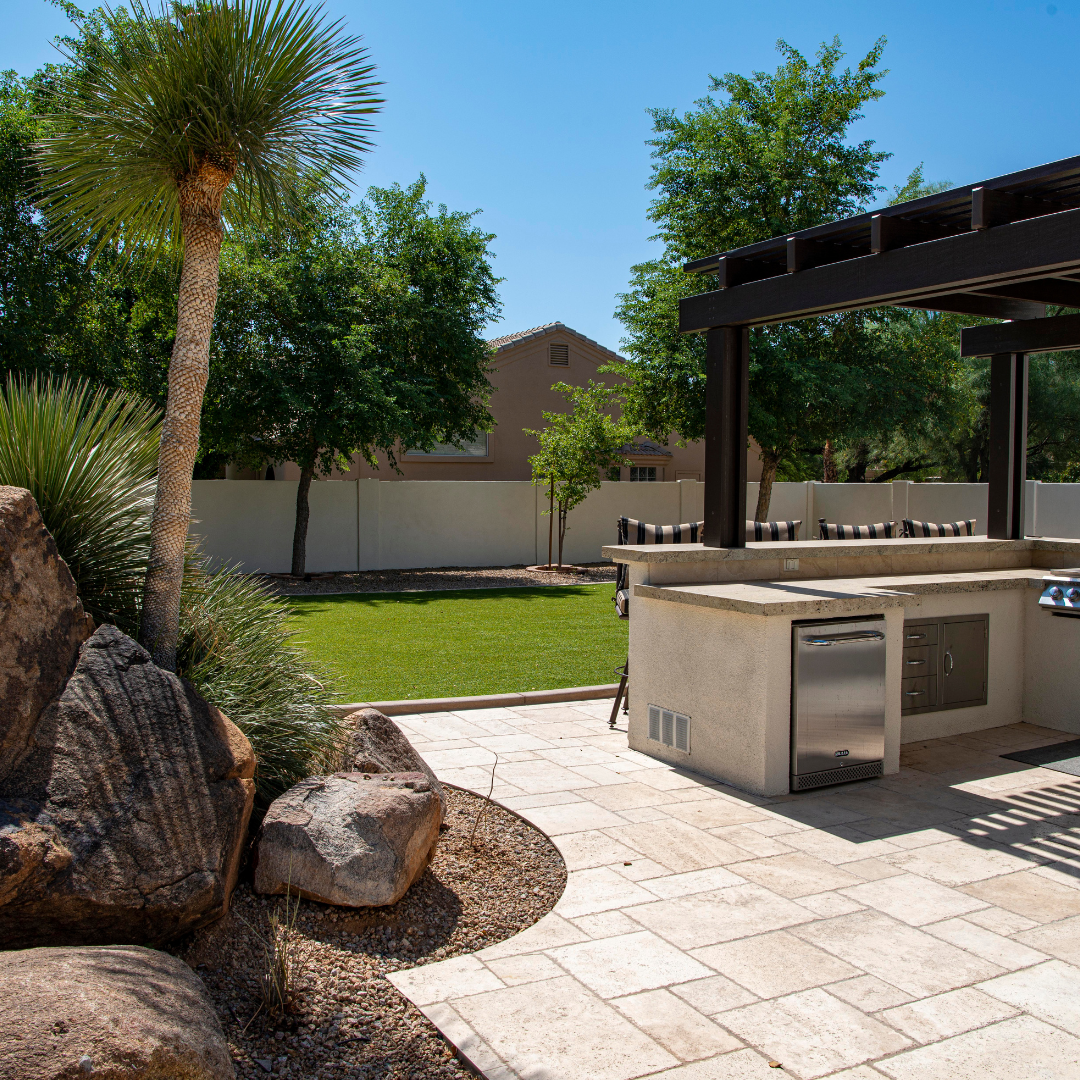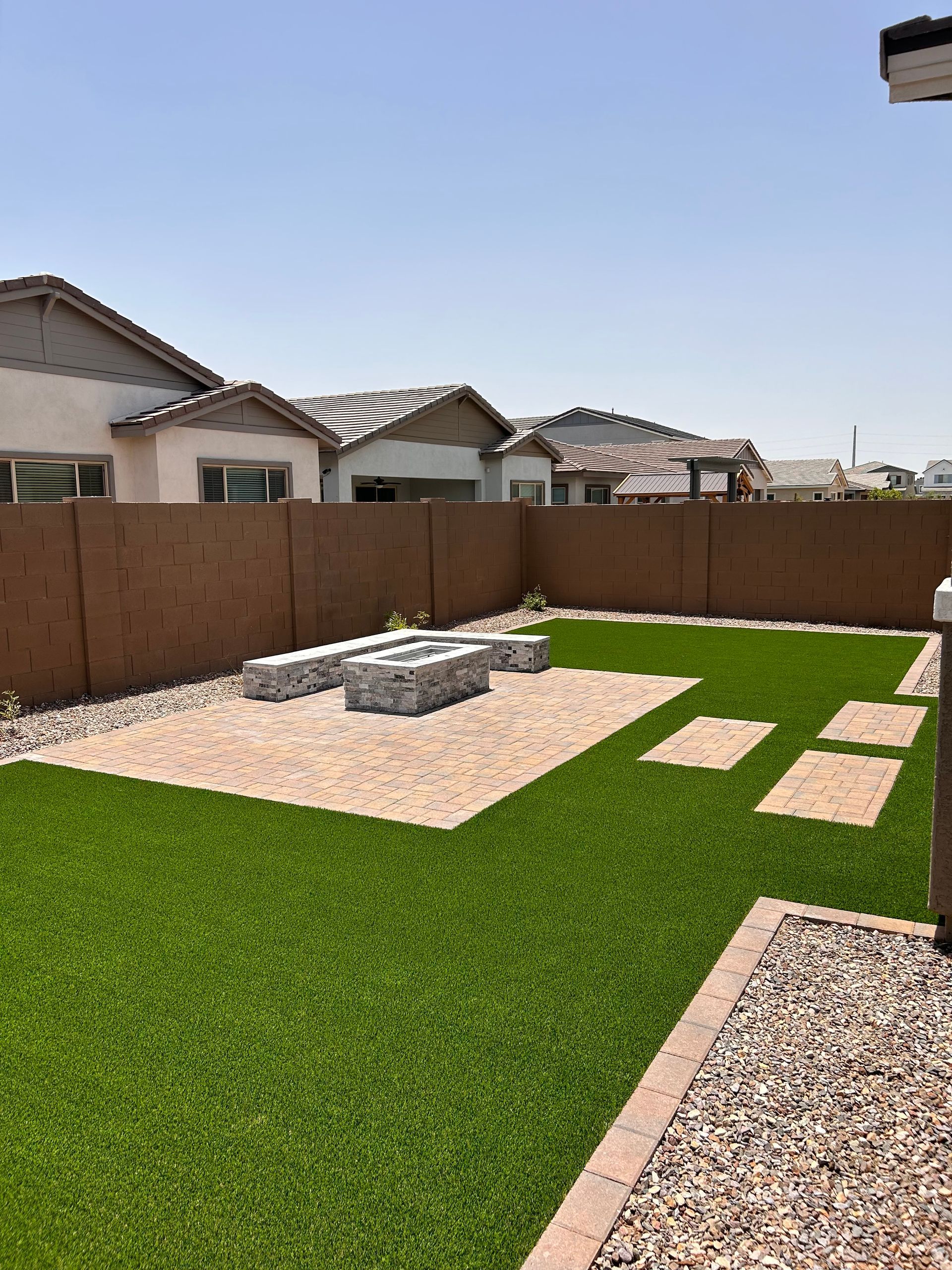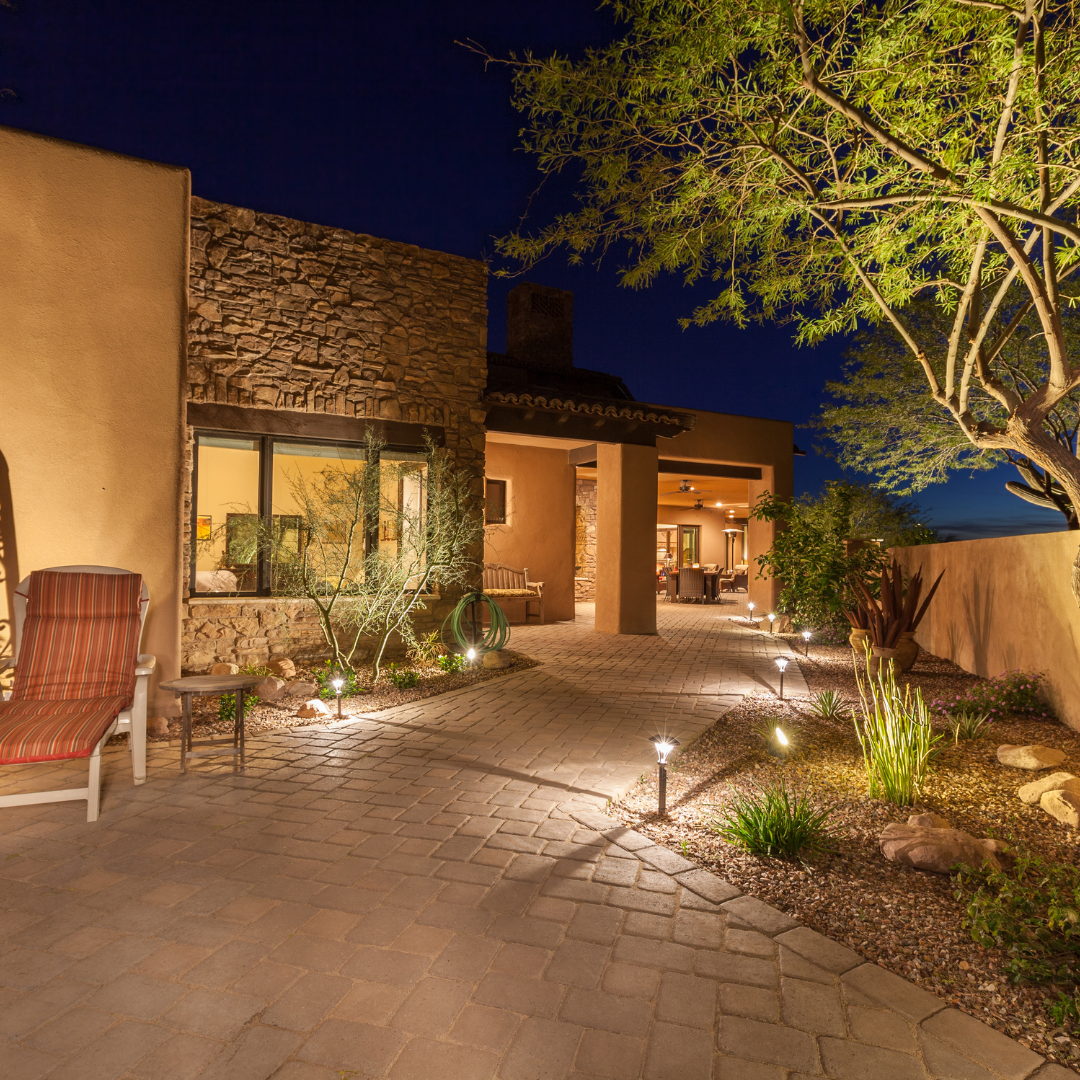Artificial Turf vs. Natural Grass in Arizona: Which is the Better Choice?
Author name
Artificial Turf vs. Natural Grass in Arizona: Which is the Better Choice?
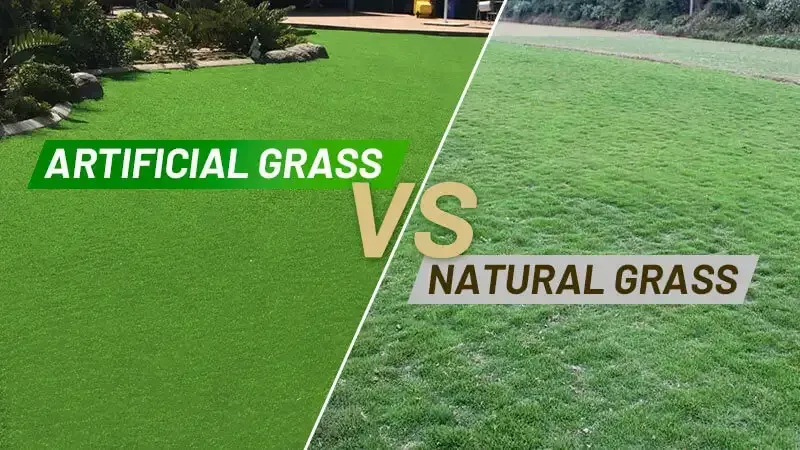
Introduction
Choosing the right landscaping solution is crucial for homeowners in Queen Creek, Phoenix, Mesa, Chandler, Gilbert, Scottsdale, and surrounding areas. With Arizona’s dry climate and water restrictions, the debate between artificial turf and natural grass has become more relevant than ever. In this guide, we’ll compare both options based on water usage, maintenance, costs, comfort, and long-term benefits to help you make the best decision for your home.
Water Usage and Sustainability
Arizona’s desert climate presents significant challenges for maintaining natural grass. With ongoing water restrictions and high utility costs, many homeowners are turning to artificial turf as a water-saving solution.
Artificial turf requires zero irrigation, saving thousands of gallons of water per year.
Natural grass needs frequent watering, making it expensive and unsustainable in Arizona’s drought-prone environment.
Drought-resistant grass varieties like Bermuda and Buffalo grass can reduce water usage but still require regular maintenance.
Maintenance and Longevity
One of the biggest advantages of artificial turf is its low maintenance requirements compared to natural grass.
Artificial turf does not require mowing, fertilizing, or watering, reducing long-term upkeep costs.
Natural grass demands weekly mowing, irrigation, fertilization, and pest control, increasing both time and expenses.
High-quality artificial turf lasts 15-20 years, while natural grass requires constant care and re-sodding due to wear and tear.
Comfort and Aesthetics
When it comes to appearance and feel, both artificial turf and natural grass have their pros and cons.
Modern artificial turf mimics real grass with advanced textures and realistic coloring.
Natural grass stays cooler in direct sunlight, while artificial turf can retain heat.
Solutions like cooling infill, shade structures, and misting systems help regulate artificial turf temperature in Arizona summers.
Cost Comparison Over Time
The initial cost of artificial turf may be higher, but it offers significant savings in the long run.
Artificial turf installation costs range from $6 to $12 per square foot, depending on the material quality and complexity of the project.
Natural grass sod or seeding is cheaper upfront but requires ongoing costs for water, mowing, fertilization, and pest control.
Over a 10-15 year period, artificial turf saves homeowners thousands of dollars in maintenance costs.
Pet and Family Friendliness
For households with pets and children, both artificial turf and natural grass have considerations.
Artificial turf is highly durable, mud-free, and resistant to digging, making it an ideal option for pet owners.
Natural grass can be softer on paws and feet, but requires pesticide-free maintenance to ensure safety.
Artificial turf drains quickly, preventing puddles and muddy messes in high-traffic areas.
Best Applications for Artificial Turf in Arizona Homes
Artificial turf isn’t just for replacing grass—it’s a versatile solution for various outdoor spaces, including:
Front yards and backyards for low-maintenance curb appeal.
Putting greens and sports areas for year-round playability.
Poolside landscaping to eliminate muddy areas and create a clean, modern look.
Conclusion
When choosing between artificial turf and natural grass, homeowners in Queen Creek, Phoenix, Mesa, Chandler, Gilbert, Scottsdale, and beyond should consider water conservation, maintenance, costs, and functionality. While natural grass may offer a traditional look, artificial turf provides long-term savings, durability, and eco-friendly benefits—making it the ideal choice for Arizona’s climate.
At Platinum Outdoors, we specialize in professional artificial turf installation tailored to your home’s unique needs. Ready to make the switch? Contact us today for a consultation and transform your outdoor space!

